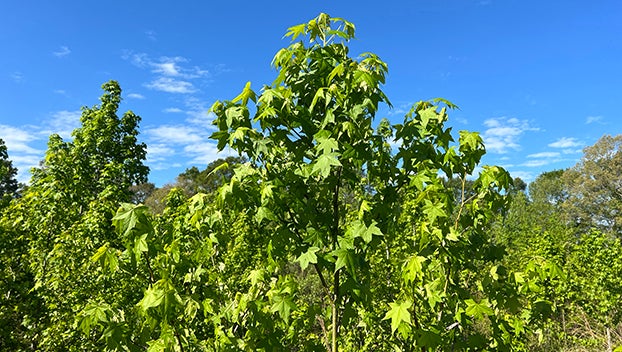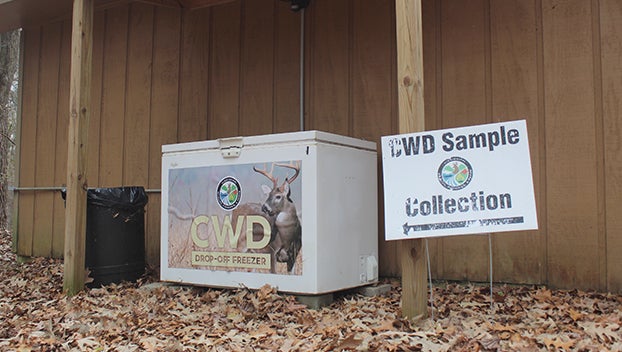Canopy tour: Sweetgum early pioneer in forest system
Published 1:02 pm Monday, April 24, 2023

- This is one of several young Sweetgum trees growing in an old pasture in Northwest Lincoln County. Sweetgums are one of the early pioneers in the forest system and help Oaks grow straighter trunks. Wildlife eat the seeds inside gumballs so the tree has some value to game. (Hunter Cloud | The Daily Leader)
BROOKHAVEN — One of the first trees to popup in new forest regeneration is the Sweetgum tree, a deciduous tree known for colorful leaves in the fall. Sweetgums reproduce at an exceptional rate and can grow up to 150 feet.
Sweetgums can be a bit of a nuisance due to how quickly they spread in abandoned fields and block sunlight from reaching the forest floor as young trees. While they do not have the same perceived value as oaks do, Sweetgums produce valuable food for wildlife.
Songbirds, doves, squirrels, quail, wood ducks and on occasion turkeys feed on the seeds found in gumballs. Each spring, squirrels will also feast on Sweetgum buds.
Wood from the sweetgum is “medium in hardness and density” according to the Mississippi State Extension Service publication on Mississippi Trees. It can be used to make furniture, boxes, crates and veneers.
Sweetgums are a shade tolerant tree and can adapt to upland and bottomland habitats. It takes about 20 years for a sweetgum to produce its fruit. If you already have sweetgums growing with oak trees it is actually a good thing, Randy Rousseau with MSU extension wrote in an article on Sweetgums.
“Research has shown that oak-on-oak competition in plantations does not lead to quality oak trees. It generally leads to larger branch sizes and poor crown differences,” Rousseau wrote. “However, when sweetgum is appropriately mixed with oak, it shades the oak stem just enough to reduce the growth of large branches and forces it to grow a straighter stem. Eventually, the oak will overtop the sweetgum, allowing the crown to expand”
With the expanded crown, an oak will produce quality mast crops improving the wildlife value in a timber stand or habitat area.
Sweetgums are not all bad but they can get in the way of land managers reaching management objectives. Selective thinning of trees through the use of cutting, burning, herbicide application or hack and squirt are ways managers can control them. Rick Hamrick, small game biologist with the Mississippi Department of Wildlife, Fisheries and Parks, said in the Hunting Guide it is best for woods to have a variety of mast producers.
Mast producers such as hickory, beech, pecan and oak trees are typically preferred but Sweetgums can play a role in providing diversity. If you do plan to cut down sweetgums or any tree in thinning out stands, methods such as hinge cutting can provide ground cover for squirrels and other wildlife.





